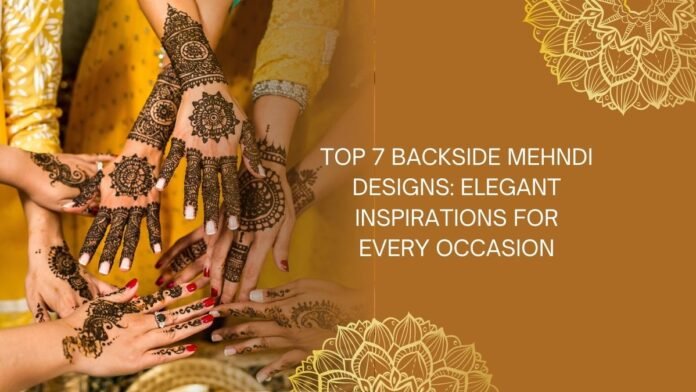Mehndi, also known as henna, is an ancient form of body art that has been celebrated for centuries across various cultures, especially in South Asia, the Middle East, and North Africa. It is traditionally applied during weddings, festivals, and special ceremonies to adorn the hands and feet with intricate designs. While front-hand mehndi designs have always garnered attention, backside mehndi designs are gaining immense popularity for their unique charm and subtle elegance. In this article, we will explore the top 7 backside mehndi designs that combine tradition with modern aesthetics, perfect for brides, festival lovers, and mehndi enthusiasts alike.
Why Choose Backside Mehndi Design?
Before diving into the most stunning backside mehndi designs, it’s important to understand why this style is becoming increasingly favored. Unlike the classic front-hand mehndi that is often visible during interactions and gestures, backside mehndi offers a more delicate, mysterious appeal. It is ideal for those who want to showcase mehndi art subtly and uniquely. Moreover, backside mehndi designs can complement traditional jewelry such as bangles, rings, and watches, enhancing the overall look without overwhelming the hand.
Backside mehndi designs also provide more space for creative freedom, allowing artists to experiment with different patterns, motifs, and themes that may not fit on the front palm due to practical constraints. This makes backside mehndi an excellent choice for those who want intricate artistry without sacrificing everyday usability.
Factors to Consider for Backside Mehndi Designs
Choosing the perfect backside mehndi design depends on several factors. Here are some key considerations:
Skin Tone and Mehndi Color
The contrast between the henna and the skin tone plays a crucial role in the visibility and vibrancy of the design. Darker skin tones may require deeper, richer henna pastes for a vivid look, whereas lighter skin tones can beautifully highlight finer, delicate patterns.
Occasion
For weddings, brides often opt for elaborate backside mehndi designs that match their bridal attire. For festivals like Eid, Diwali, or Karva Chauth, designs are usually moderate yet artistic. Casual occasions call for simpler, minimalistic designs.
Comfort and Longevity
Since the backside of the hand is more exposed to washing and environmental factors, it’s essential to pick designs that not only look good but also last longer. Avoid overly dense patterns in high-friction areas.
Top 7 Backside Mehndi Designs
Here, we present seven exquisite backside mehndi designs, ranging from traditional to contemporary, perfect for various tastes and occasions.
1. Traditional Floral Backside Mehndi Design
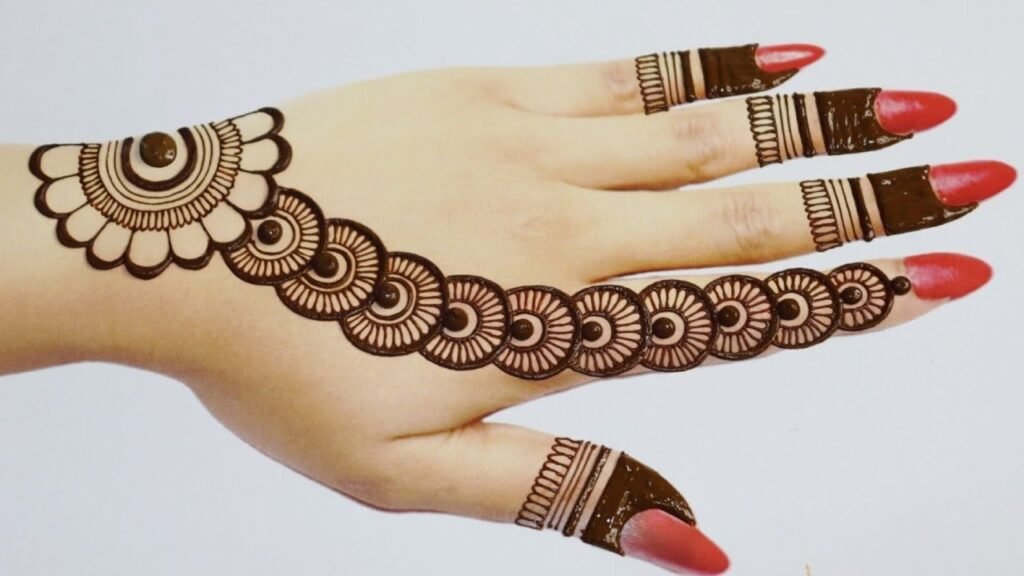
Overview
The traditional floral mehndi design is a timeless classic. It uses repetitive floral motifs, vines, and leaves arranged gracefully over the backside of the hand, radiating from the wrist toward the fingers.
Design Elements
- Central floral motif: A large flower at the center of the backside.
- Vines and leaves: Flowing patterns that extend across the back of the hand.
- Finger detailing: Thin leaf or petal patterns on the fingers for continuity.
Why It’s Popular
This design is elegant and feminine, perfectly suited for bridal occasions and festivals. It offers a beautiful balance of bold and delicate elements, making the hand look artistic yet refined.
Tips for Application
Use a fine-tipped henna cone for detailed leaves and petals. For a deeper stain, keep the paste on for 4–6 hours. Pair this design with traditional gold or floral jewelry to enhance the aesthetic.
2. Geometric and Mandala Backside Mehndi Design
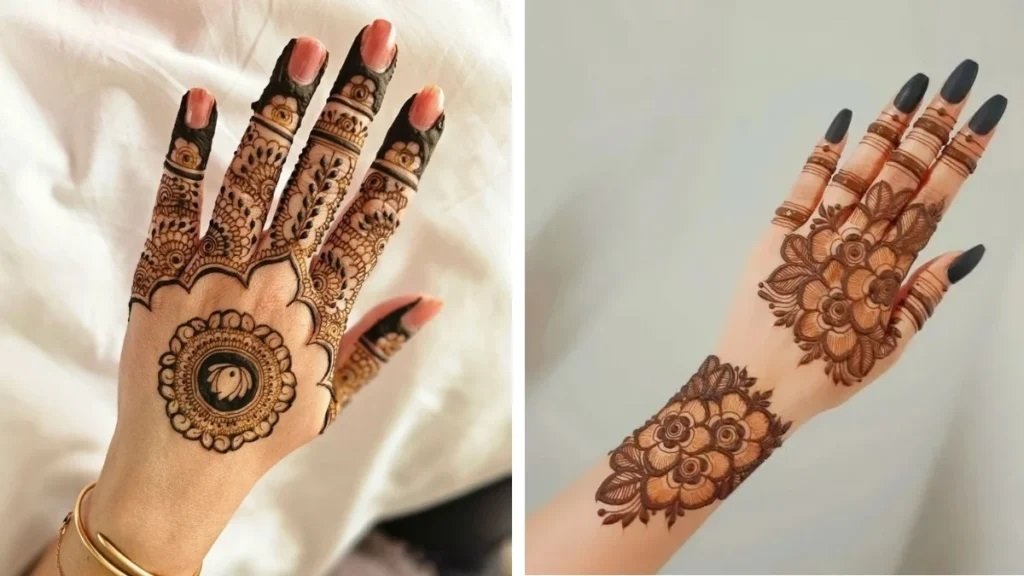
Overview
Geometric mehndi designs are trendy and modern. They incorporate shapes like triangles, squares, and diamonds, interwoven with mandala circles. This design is perfect for those who want a contemporary twist.
Design Elements
- Mandala centerpiece: Circular mandalas at the center of the backside.
- Symmetrical patterns: Repeated geometric shapes arranged symmetrically.
- Negative space: Areas left blank to highlight the geometric shapes.
Why It’s Popular
Geometric designs are versatile and gender-neutral, making them popular not only among women but also men who want mehndi for cultural events. The precise patterns give a neat, sophisticated look.
Tips for Application
Ensure symmetry by sketching lightly with a skin-safe pencil before applying henna. Keep the lines sharp for a crisp effect, and consider adding small dots or embellishments for added texture.
3. Peacock-Inspired Backside Mehndi Design
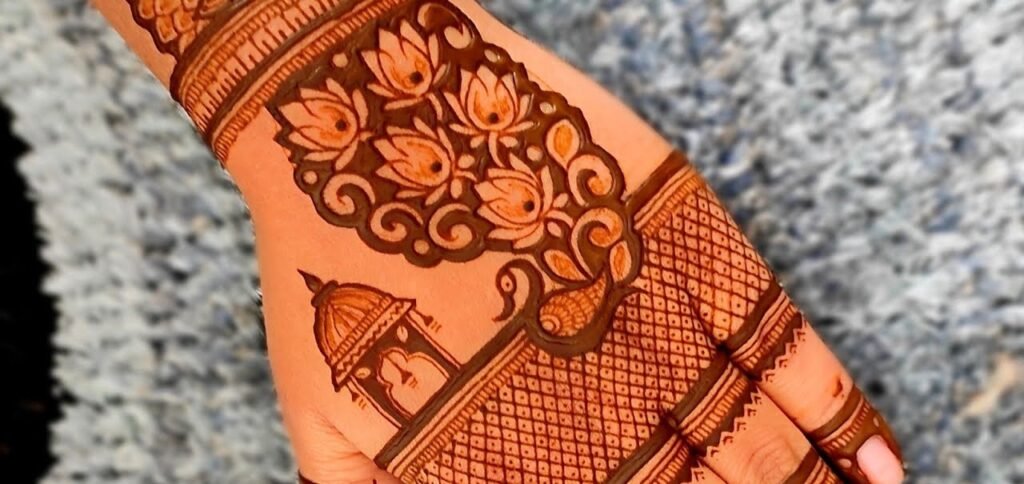
Overview
Peacock motifs symbolize beauty, grace, and elegance. This design centers around a peacock feather or the full bird elegantly posed across the backside of the hand.
Design Elements
- Peacock feather: Intricate feather patterns with detailed eye spots.
- Feather trails: Flowing lines that mimic the feather’s natural curve.
- Complementary patterns: Floral or swirl patterns around the peacock.
Why It’s Popular
Peacock designs are regal and eye-catching. Brides often prefer this design for their wedding mehndi because it signifies beauty and prosperity.
Tips for Application
Focus on the feather’s details — use tiny dots and fine lines for texture. For a richer design, add shading by varying the thickness of lines.
4. Minimalist Backside Mehndi Design
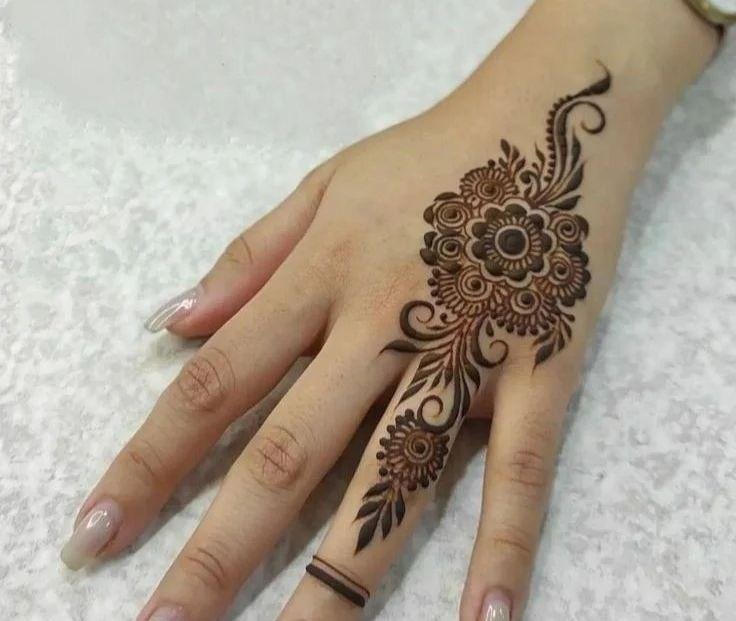
Overview
Minimalism in mehndi is about using less but making it impactful. Simple lines, dots, and small motifs arranged thoughtfully create a chic and modern backside mehndi design.
Design Elements
- Single motif: A small flower, star, or heart placed in the center or near the wrist.
- Delicate lines: Thin lines tracing the contours of the hand.
- Sparse dots: Minimal dots that accentuate the design.
Why It’s Popular
Minimalist designs are perfect for everyday wear, office occasions, or those new to mehndi art. They are quick to apply and maintain, yet stylish.
Tips for Application
Use a fine henna cone and practice steady hands for smooth lines. Avoid smudging by allowing the paste to dry completely before moving your hand.
5. Arabic-Style Backside Mehndi Design
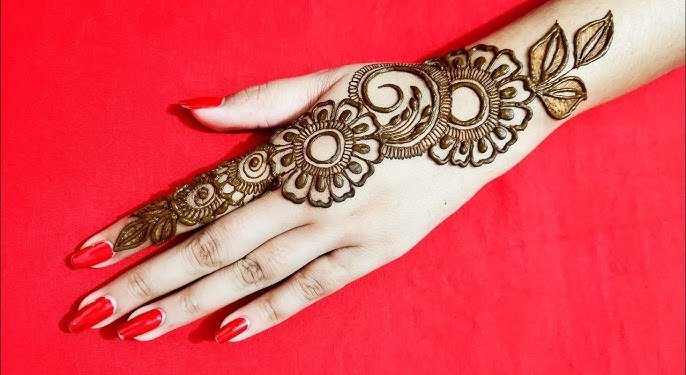
Overview
Arabic mehndi is known for its bold, flowing lines and floral patterns that cover the hand asymmetrically. The backside design focuses on sweeping vines and bold flower clusters.
Design Elements
- Bold flowers: Large floral shapes dominating the center.
- Flowing vines: Long, curved lines extending to the fingers.
- Leaves and petals: Thick and artistic, filling empty spaces.
Why It’s Popular
Arabic designs stand out because of their boldness and fluidity. They are easier to apply than dense Indian designs and give a luxurious look in less time.
Tips for Application
Use thick henna paste for bold strokes. Start from the wrist and move upwards to maintain flow. Add small dots for fine detailing.
6. Bridal Backside Mehndi Design with Paisleys and Lace
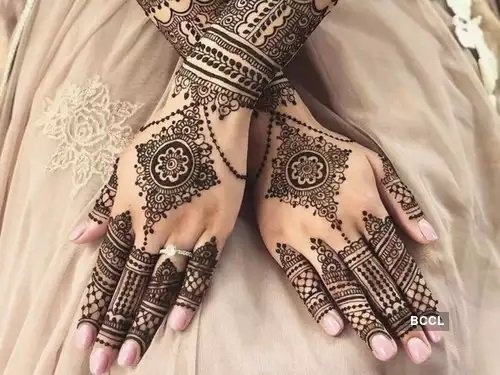
Overview
Bridal mehndi often incorporates paisleys and lace-like patterns for an intricate, elegant finish. This design covers the entire backside with dense detailing, perfect for the big day.
Design Elements
- Paisleys: Large, teardrop-shaped motifs filled with intricate lines.
- Lace borders: Patterns resembling lace edging along the hand.
- Fine netting: Delicate mesh or net patterns fill spaces between paisleys.
Why It’s Popular
This design combines tradition with artistry, giving brides a stunning, elaborate look. The lace effect pairs beautifully with bridal attire and jewelry.
Tips for Application
Plan the design layout carefully to avoid overcrowding. Use a fine tip for detailed netting and keep the henna paste thick for bold paisleys.
7. Fusion Backside Mehndi Design
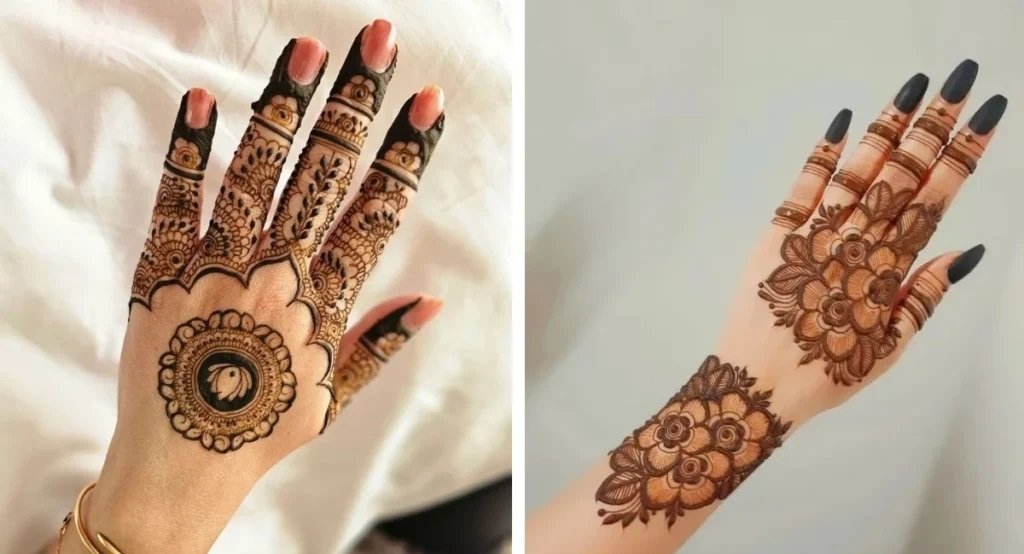
Overview
Fusion designs blend different mehndi styles, such as combining traditional motifs with geometric shapes or Arabic floral patterns with minimalist elements. This approach offers a personalized, unique look.
Design Elements
- Mixed motifs: Use a combination of flowers, mandalas, and geometric patterns.
- Asymmetry: Creative placement of motifs for a modern feel.
- Highlighting: Use negative space creatively to emphasize key designs.
Why It’s Popular
Fusion mehndi appeals to the younger generation and fashion-forward individuals who want to make a statement. It allows flexibility in design and suits many occasions.
Tips for Application
Discuss your vision with the mehndi artist beforehand. Be open to experimenting with shapes and placement, ensuring the design complements your overall style.
Caring for Your Backside Mehndi Design
To make sure your backside mehndi design lasts long and stains deeply, follow these care tips:
- Keep the henna paste on for 6-8 hours. The longer the paste stays, the darker the stain.
- Avoid water contact immediately after removing the dried paste for at least 12 hours.
- Apply lemon and sugar mixture lightly on the dried paste to intensify the color.
- Avoid excessive washing or scrubbing on the backside of your hands to maintain design longevity.
- Moisturize with natural oils like coconut or olive oil to protect the mehndi stain.
Table of Contents
Conclusion
Backside mehndi designs are an elegant way to express creativity and cultural heritage with a modern touch. Whether you prefer the delicate floral patterns of traditional designs, the bold statements of Arabic styles, or the chic simplicity of minimalism, there is a backside mehndi design perfect for your taste and occasion. The seven designs discussed in this article are some of the best options to consider, each bringing its own unique charm and beauty.
Next time you plan your mehndi, don’t forget to explore the backside of your hands—it might just become your favorite canvas for henna art!
Also read Top 10 Shiv Mehndi Designs: A Detailed Guide to Divine Henna Art


